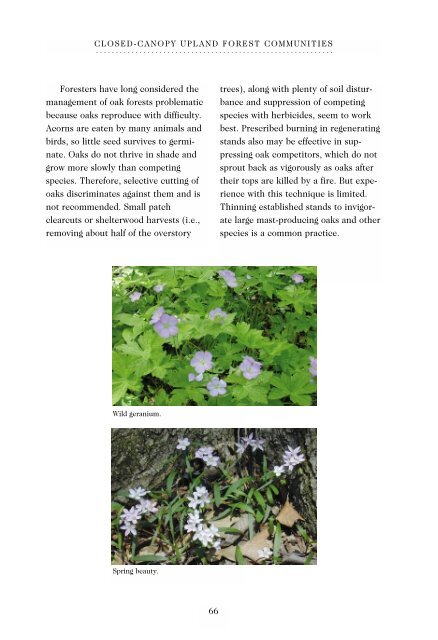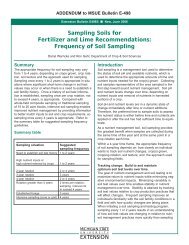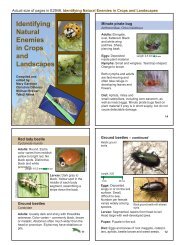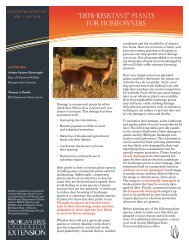Michigan Forest Communities - Michigan Association of ...
Michigan Forest Communities - Michigan Association of ...
Michigan Forest Communities - Michigan Association of ...
You also want an ePaper? Increase the reach of your titles
YUMPU automatically turns print PDFs into web optimized ePapers that Google loves.
CLOSED-CANOPY UPLAND FOREST COMMUNITIES<br />
<strong>Forest</strong>ers have long considered the<br />
management <strong>of</strong> oak forests problematic<br />
because oaks reproduce with difficulty.<br />
Acorns are eaten by many animals and<br />
birds, so little seed survives to germinate.<br />
Oaks do not thrive in shade and<br />
grow more slowly than competing<br />
species. Therefore, selective cutting <strong>of</strong><br />
oaks discriminates against them and is<br />
not recommended. Small patch<br />
clearcuts or shelterwood harvests (i.e.,<br />
removing about half <strong>of</strong> the overstory<br />
trees), along with plenty <strong>of</strong> soil disturbance<br />
and suppression <strong>of</strong> competing<br />
species with herbicides, seem to work<br />
best. Prescribed burning in regenerating<br />
stands also may be effective in suppressing<br />
oak competitors, which do not<br />
sprout back as vigorously as oaks after<br />
their tops are killed by a fire. But experience<br />
with this technique is limited.<br />
Thinning established stands to invigorate<br />
large mast-producing oaks and other<br />
species is a common practice.<br />
Wild geranium.<br />
Spring beauty.<br />
66










